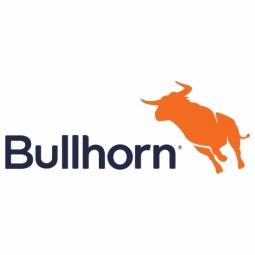适用行业
- 生命科学
- 药品
适用功能
- 维护
- 采购
用例
- 时间敏感网络
服务
- 系统集成
关于客户
Callidus Executive 是一家混合型猎头机构和咨询公司,成立于 2010 年。专门从事德语市场的制药和能源招聘。 Callidus 最初是一家两人招聘机构,在短时间内经历了指数级增长,目前拥有十多名拥有高度专业化和宝贵行业知识的顾问。作为一家年轻而敏捷的公司,Callidus 正在寻找一种能够与其自身速度和潜力相匹配的 ATS,并有助于保持其在竞争中的领先地位。
挑战
Callidus Executive 是一家混合型猎头机构和咨询公司,专注于德语市场的制药和能源招聘,其现有的申请人跟踪系统 (ATS) Meffert 面临着挑战。该软件的功能和定制选项有限,并且缺乏可扩展性,因此不适合 Callidus 快速增长的业务。梅弗特提供的支持也不可靠,使情况进一步复杂化。 Callidus 需要一款能够与其速度和潜力相匹配的 ATS,并在招聘行业提供竞争优势。理想的解决方案需要适应公司的发展,并且即使在用户数量较多的情况下也能高效工作。
解决方案
Callidus 决定改用 Bullhorn,这是一种具有坚实技术基础、全球影响力和可扩展性的 ATS/CRM。 Bullhorn 基于云的解决方案提供无缝、自动升级,其 API 允许 Callidus 定制产品以满足其需求。与之前的软件不同,Bullhorn 适应了 Callidus 的工作方式,带来了显着的好处。 Bullhorn 的 Marketplace 提供了各种创新的交钥匙解决方案,Callidus 使用这些解决方案来满足特定的业务需求并获得竞争优势。 Bullhorn ATS 使 Callidus 招聘人员能够轻松访问安置指标并跟踪成功情况。其可靠性和响应能力使 Callidus 能够以速度超越竞争对手。
运营影响
数量效益

Case Study missing?
Start adding your own!
Register with your work email and create a new case study profile for your business.
相关案例.

Case Study
Case Study: Pfizer
Pfizer’s high-performance computing software and systems for worldwide research and development support large-scale data analysis, research projects, clinical analytics, and modeling. Pfizer’s computing services are used across the spectrum of research and development efforts, from the deep biological understanding of disease to the design of safe, efficacious therapeutic agents.

Case Study
Fusion Middleware Integration on Cloud for Pharma Major
Customer wanted a real-time, seamless, cloud based integration between the existing on premise and cloud based application using SOA technology on Oracle Fusion Middleware Platform, a Contingent Worker Solution to collect, track, manage and report information for on-boarding, maintenance and off-boarding of contingent workers using a streamlined and Integrated business process, and streamlining of integration to the back-end systems and multiple SaaS applications.

Case Study
Process Control System Support
In many automated production facilities, changes are made to SIMATIC PCS 7 projects on a daily basis, with individual processes often optimised by multiple workers due to shift changes. Documentation is key here, as this keeps workers informed about why a change was made. Furthermore, SIMATIC PCS 7 installations are generally used in locations where documentation is required for audits and certification. The ability to track changes between two software projects is not only an invaluable aid during shift changes, but also when searching for errors or optimising a PCS 7 installation. Every change made to the system is labour-intensive and time-consuming. Moreover, there is also the risk that errors may occur. If a change is saved in the project, then the old version is lost unless a backup copy was created in advance. If no backup was created, it will no longer be possible to return to the previous state if and when programming errors occur. Each backup denotes a version used by the SIMATIC PCS 7 system to operate an installation. To correctly interpret a version, information is required on WHO changed WHAT, WHERE, WHEN and WHY: - Who created the version/who is responsible for the version? - Who released the version? - What was changed in the version i.e. in which block or module of the SIMATIC PCS 7 installation were the changes made? - When was the version created? Is this the latest version or is there a more recent version? - Why were the changes made to the version? If they are part of a regular maintenance cycle, then is the aim to fix an error or to improve production processes? - Is this particular version also the version currently being used in production? The fact that SIMATIC PCS 7 projects use extremely large quantities of data complicates the situation even further, and it can take a long time to load and save information as a result. Without a sustainable strategy for operating a SIMATIC PCS 7 installation, searching for the right software version can become extremely time-consuming and the installation may run inefficiently as a result.

Case Study
ELI LILLY ADOPTS MICROMEDIA’S ALERT NOTIFICATION SYSTEM
Pharmaceutical production is subject to a strict set of enforced rules that must be adhered to and compliance to these standards is critically necessary. Due to the efforts of WIN 911’s strategic partner Micromedia, Lilly was able to adopt an alarm notification infrastructure that integrated smoothly with their existing workflows and emergency hardware and protocols. These raw energy sources enable the industrial process to function: electricity, WIN-911 Software | 4020 South Industrial Drive, Suite 120 | Austin, TX 78744 USA industrial steam, iced water, air mixtures of varying quality. Refrigeration towers, boilers and wastewater are monitored by ALERT. Eli Lilly identified 15000 potential variables, but limitations compelled them to chisel the variable list down to 300. This allowed all major alarms to be covered including pressure, discharge, quantity of waste water discharged,temperature, carbon dioxide content, oxygen & sulphur content, and the water’s pH.









